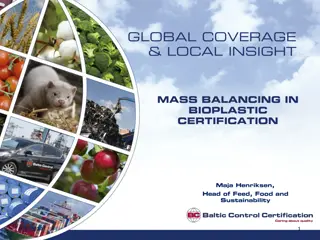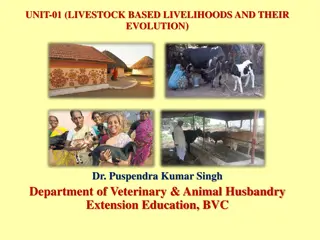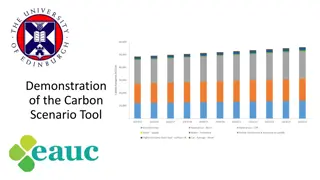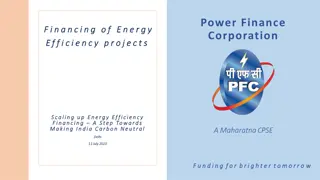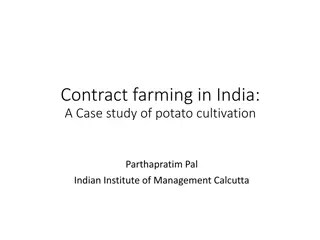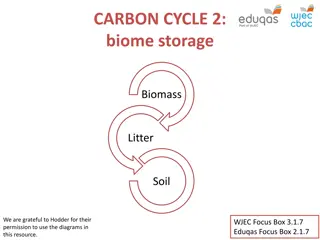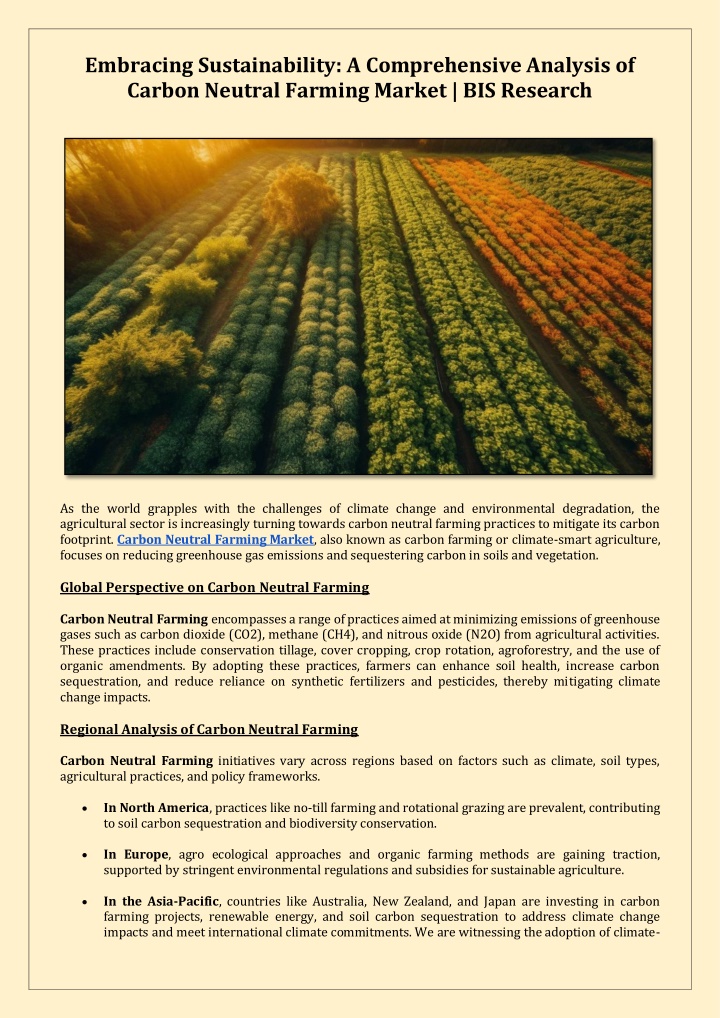
Embracing Sustainability: A Comprehensive Analysis of Carbon Neutral Farming
Carbon Neutral Farming Market, also known as carbon farming or climate-smart agriculture, focuses on reducing greenhouse gas emissions and sequestering carbon in soils and vegetation.
Uploaded on | 8 Views
Download Presentation

Please find below an Image/Link to download the presentation.
The content on the website is provided AS IS for your information and personal use only. It may not be sold, licensed, or shared on other websites without obtaining consent from the author. If you encounter any issues during the download, it is possible that the publisher has removed the file from their server.
You are allowed to download the files provided on this website for personal or commercial use, subject to the condition that they are used lawfully. All files are the property of their respective owners.
The content on the website is provided AS IS for your information and personal use only. It may not be sold, licensed, or shared on other websites without obtaining consent from the author.
E N D
Presentation Transcript
Embracing Sustainability: A Comprehensive Analysis of Carbon Neutral Farming Market | BIS Research As the world grapples with the challenges of climate change and environmental degradation, the agricultural sector is increasingly turning towards carbon neutral farming practices to mitigate its carbon footprint. Carbon Neutral Farming Market, also known as carbon farming or climate-smart agriculture, focuses on reducing greenhouse gas emissions and sequestering carbon in soils and vegetation. Global Perspective on Carbon Neutral Farming Carbon Neutral Farming encompasses a range of practices aimed at minimizing emissions of greenhouse gases such as carbon dioxide (CO2), methane (CH4), and nitrous oxide (N2O) from agricultural activities. These practices include conservation tillage, cover cropping, crop rotation, agroforestry, and the use of organic amendments. By adopting these practices, farmers can enhance soil health, increase carbon sequestration, and reduce reliance on synthetic fertilizers and pesticides, thereby mitigating climate change impacts. Regional Analysis of Carbon Neutral Farming Carbon Neutral Farming initiatives vary across regions based on factors such as climate, soil types, agricultural practices, and policy frameworks. In North America, practices like no-till farming and rotational grazing are prevalent, contributing to soil carbon sequestration and biodiversity conservation. In Europe, agro ecological approaches and organic farming methods are gaining traction, supported by stringent environmental regulations and subsidies for sustainable agriculture. In the Asia-Pacific, countries like Australia, New Zealand, and Japan are investing in carbon farming projects, renewable energy, and soil carbon sequestration to address climate change impacts and meet international climate commitments. We are witnessing the adoption of climate-
smart agriculture practices to address soil degradation, water scarcity, and food security challenges. Download the Market Research Report Now! Get insights into emerging technologies in the Carbon Neutral Farming Market. Key Market Drivers of Carbon Neutral Farming Growing Consumer Demand: Consumers are increasingly seeking sustainably produced food, driving farmers to adopt eco-friendly practices. Policy Initiatives and Incentives: Governments offer carbon credits and subsidies for agro ecological practices, encouraging farmers to transition. Climate Change Resilience: Farmers recognize the need to adapt to climate change impacts like droughts and extreme weather events, prompting them to implement measures. Regulatory Pressures: Stringent environmental regulations and carbon pricing mechanisms are incentivizing agricultural stakeholders to adopt carbon neutral practices. Market Challenges and Opportunities While carbon neutral farming offers numerous benefits, including climate mitigation, soil health improvement, and biodiversity conservation, it also presents challenges. Farmers may face barriers such as initial investment costs, knowledge gaps, and technical limitations in adopting new practices. Moreover, the scalability and effectiveness of carbon farming practices vary depending on local conditions and socio- economic factors. However, these challenges also present opportunities for innovation, collaboration, and capacity building to overcome barriers and promote widespread adoption of sustainable farming practices. Future Market Outlook The future of the Carbon Neutral Farming Industry hinges on collaborative efforts from stakeholders across the agricultural value chain, including farmers, researchers, policymakers, and consumers. Continued research and development in soil management, crop genetics, and agricultural technologies will drive innovation and improve the efficacy of carbon farming practices. Furthermore, partnerships between public and private sectors, along with international cooperation, will be crucial in scaling up carbon neutral farming initiatives and achieving global sustainability goals. Also Available: Detailed Research Reports for the Agriculture Industry. Conclusion Carbon Neutral Farming holds immense potential to transform the agricultural sector into a key player in the fight against climate change and environmental degradation. By adopting sustainable practices that enhance soil health, sequester carbon, and promote ecosystem resilience, farmers can contribute to building a more resilient and sustainable food system. As the world faces unprecedented challenges posed by climate change, carbon neutral farming emerges as a beacon of hope, offering a path towards a more sustainable and resilient future for agriculture and the planet.



